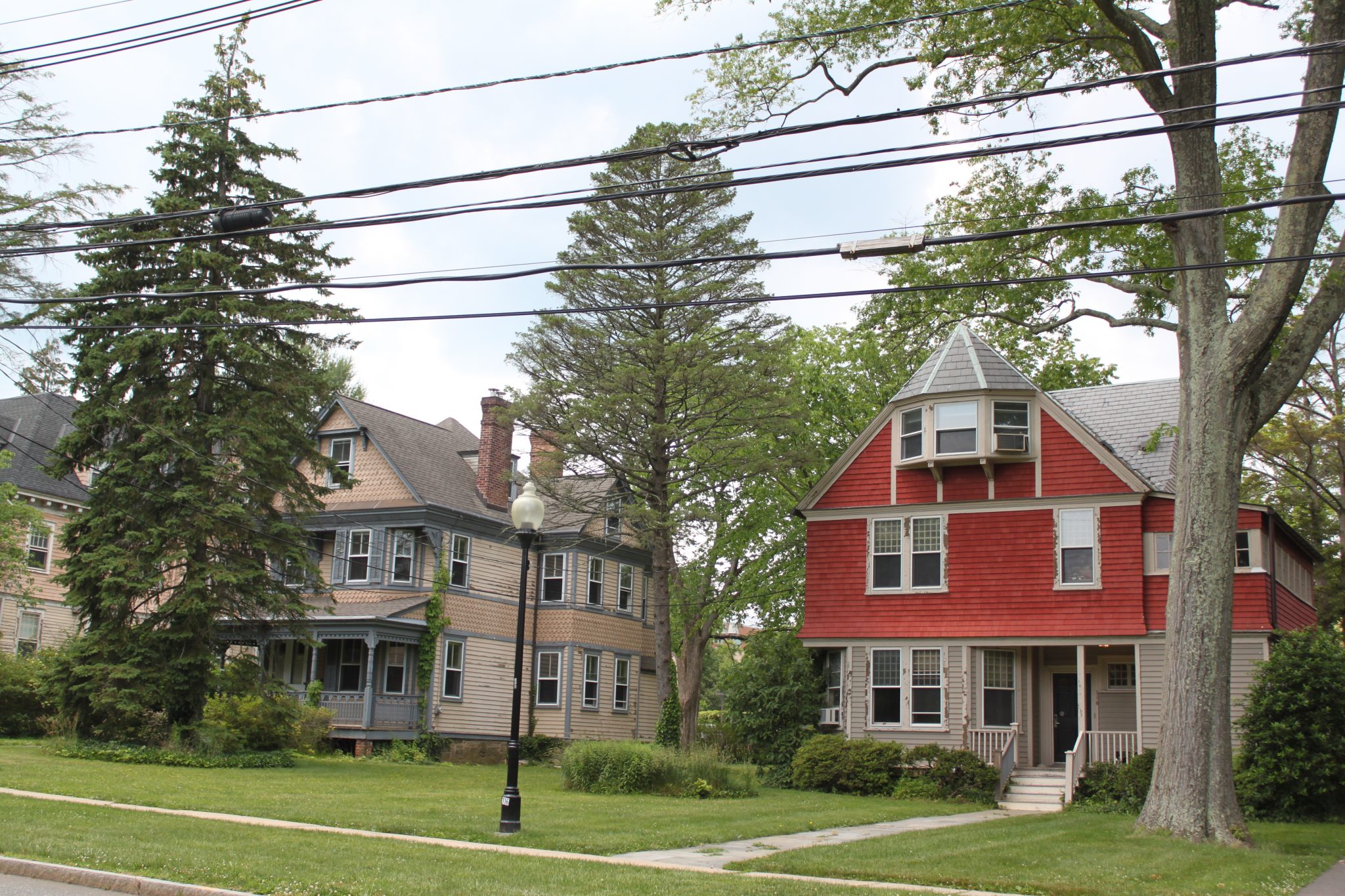
The Princeton Planning Board has endorsed a recommendation to create the Prospect Avenue Historic District, centered on the undergraduate eating clubs that line Prospect Avenue between Washington Road and Murray Place.
The recommendation, which was made at the Planning Board’s Jan. 6 meeting, will be sent to the Princeton Council for action. If the council agrees, the Prospect Avenue Historic District will become Princeton’s 21st local historic district.
The Princeton Historic Preservation Commission adopted a resolution recommending the creation of the local historic district in November 2021, following extensive discussion and review. The recommendation was sent to the Princeton Planning Board, which in turn will send it to the Princeton Council.
“This is a really exciting opportunity,” Princeton Planning Director Michael LaPlace told the Planning Board. An historic district designation had been proposed for Prospect Avenue and the clubs in the 1990s, and now it is coming to fruition, he said.
The impetus for moving ahead with a local historic district on Prospect Avenue – 30 years after it was proposed in 1992 – stems from Princeton University’s application to demolish three Victorian houses and move another building to their site to make way for a campus project.
The issue has been resolved, and the houses will not be demolished. Princeton University supports the proposed historic district.
The proposed local historic district would encompass a portion of Prospect Avenue, beginning at Washington Road and stopping at Murray Place on the north side of the street. It would exclude the academic buildings on the corner of Washington Road and Prospect Avenue.
On the south side of the street, it would include all of the eating club buildings, starting at Washington Road and stopping two properties short of Fitzrandolph Road.
The historic district would include the 15 undergraduate eating clubs – 11 of them still used for that purpose by Princeton University undergraduate students – and three Victorian houses at 110 Prospect Ave., 114 Prospect Ave. and 116 Prospect Ave. The three-story brick apartment building on the corner of Prospect Avenue and Murray Place would be included.
The eating clubs, which are not affiliated with Princeton University, meet the students’ needs for food and social activities. Their function is similar to the Greek fraternities and sororities on many college campuses.
The proposed district would include the Ferris Thompson Wall and gateway, which led to athletic fields on the north side of Prospect Avenue. The former athletic fields have been redeveloped for other uses by Princeton University.
This is not the first time that a local Prospect Avenue historic district has been considered. It was first proposed in 1992, but never enacted. The Princeton Community Master Plan’s historic preservation element recommended creating the Club Row Historic District at that time.
Most of the area of Prospect Avenue is included in the larger Princeton Historic District, which was entered on the State Register of Historic Places in 1973 and added to the National Register of Historic Places in 1975.
The Princeton Historic District encompasses a large swath of the former Princeton Borough, including most of the Princeton University and Princeton Theological Seminary campuses, and parts of Mercer Street and Nassau Street.
Alterations or additions to a property included in a local historic district would be subject to review by the Princeton Historic Preservation Commission, if they are visible from the street. A review is not required for a property listed on the state and national Register of Historic Places.
Princeton University’s application to relocate the former Court Club at 91 Prospect Ave. to land across the street on the north side of Prospect Avenue triggered the renewed effort to create a local historic district. Three Victorian houses would have been torn down to make room for the former eating club.
The demolition-and-relocation plan was key to Princeton University’s planned development of the Environmental Studies and School of Engineering and Applied Sciences complex – about 3% of which was proposed to sit on land occupied by the former Court Club.
A compromise was negotiated that saved the three Victorian houses and allowed the Court Club building to be moved across the street. Princeton University also agreed to support the proposed Prospect Avenue Historic District.
Elizabeth Kim, the town’s historic preservation officer, told the Planning Board at the Jan. 6 meeting that Clifford Zink and Sandy Harrison approached the Princeton Historic Preservation Commission in July 2021 to revive the proposed historic district on Prospect Avenue.
Zink is a historic preservation consultant and the author of “The Princeton Eating Clubs.” Harrison is the chairman of the Princeton Prospect Foundation’s board of trustees. The foundation supports and oversees the eating clubs.
The Historic Preservation Commission “strongly supported” the district because it possesses historic, cultural and architectural significance, which the commission felt should receive preservation protection, Kim said.
“The recommended Prospect Avenue Historic District embodies many aspects of significant American and local history, primarily involving and surrounding the eating clubs of Princeton University and the people who fostered, belonged to, worked for, associated with, and even opposed them over 17 decades since the 1850s and even to the present day,” Kim said.
The town’s Black residents who served as cooks, stewards and housekeepers at the eating clubs should be acknowledged as the backbone of the clubs’ success, Kim said. Their essential services given over most of their lives deserve special recognition and respect, she said.



